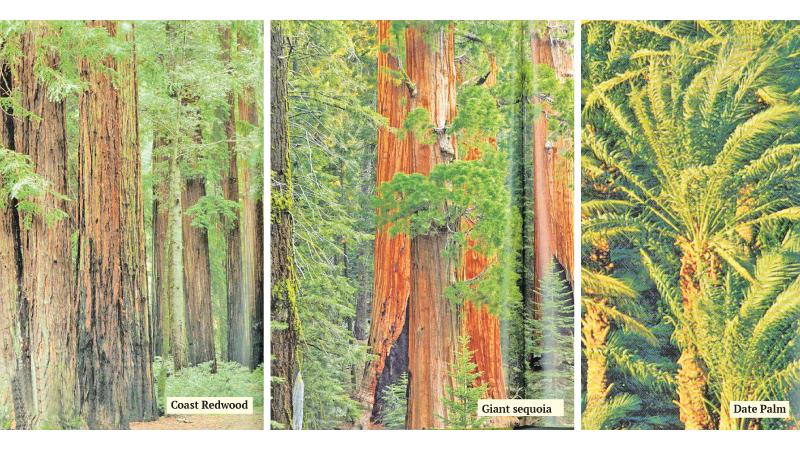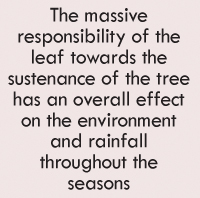
If you happen to walk past clusters or a group of trees, see how you can recognize or identify them or at least some of them. You need not be a botanist or an expert to do so.
They can be on river banks or in the thick forests, or for that matter, in the woods behind where you live. It is a very challenging experience for those who love and care for these genial giants, some of them who reach the sky and they are like the pillars of the sky.
 Leaves are enormously useful when it comes to identifying trees. The shape of leaves vary greatly from straight known as ‘linear’ to heart-shaped or rounded through to deeply lobed.
Leaves are enormously useful when it comes to identifying trees. The shape of leaves vary greatly from straight known as ‘linear’ to heart-shaped or rounded through to deeply lobed.
If leaves are flat, they are known as compound leaves, meaning, they are divided into individual leaflets but growing from a single leaf bud.
Pinnate leaflets grow off a central stalk, either opposite in pairs or alternately. Palmate leaflets as their name suggests, grows at the end of a stalk and resembles a hand.
Margins
The edges of a leaf known botanically as ‘margins’ also vary in appearance. Smooth-edged leaves are known as ‘entire’, while leaves with serrated margins are ‘toothed’. When the leaf is deeply indented, it is known as ‘lobbed’.
Leaf margins may also be wavy. The texture of a tree’s leaves is another characteristic to be aware of. Are they fine or leathery? Rough, dull or glossy. Smooth or hairy. The size of the leaf is yet another factor and leaf colours range from many shades of green to silver gray. The Copper Beech, for instance, is easily identified by its very striking and unusual purple-red foliage.
Identification from the bark
Put together, all these marvels of trees make them spectacular not only in the wilds but in your backyard too. How the flowers grow on trees, especially deciduous trees in winter when leaves are blown in air announcing their life’s end.
Some are recognized by their spreading shape with thick twisting branches. Always remember that the height and shape of a tree depends upon its habitat, with excessive competition or crowding from other trees affecting their growth with the four seasons impacting their various effects.
Spring: The season in which vegetation begins. It is the season preceding summer. A place where water and oil wells up from earth’s basin to be formed.
Autumn: Third season of the year. It is a season of incipient decay.
Summer: Second hot season. Dictated by the clocks advanced to a use of daylight. A season of life or age. A period of fine weather.
Winter: A season between Autumn and Summer. Three or four coldest months of the year.
With much or without frost occurring. Some plants in hibernation, glass covered space with plants, genus of plants with bulbs or buds protecting plants embryo through.
The anatomy of a tree: The massive responsibility of the leaf towards the sustenance of the tree has an overall effect on the environment and rainfall throughout the seasons, put it simply, leaves are the tree’s food factory.
They are the site of the photosynthesis the process whereby the sugars are made from water and carbon dioxide, using energy from sunlight, leaves are characteristically positioned to enjoy maximum light absorption.
The structure of a leaf is covered on its upper and lower surfaces by a layer of large cells known as epidermis. And coated outside by a protective, waxy covering known as cuticle which prevents water loss. Little breathing holes known as stomata, a process known as transpiration.
In the leaves of broad-leafed trees, a network of visible veins carry the xylem, bearing the raw materials of photosynthesis such as water and mineral from the roots and the phloem, carrying the sugars made by the I never to the other parts of the tree. Evergreen needles carry out the same function but more in compact form.
Here, the botanists have developed a whole specialized vocabulary, of terms to ensure accuracy and did correct identification. leaves can be divided into three groups.
a) Simple leaves come in a whole varsity of shapes, from round to oval and can have from round to oval and smooth edges, serrated ages or be indented.
b) Compound leaves at first glance look like spate leaves growing off the same stalk. However, the whole stalk and its leaflets all gown from the same leaf bud, making it on one leaf.
c) Needles as their name suggests and narrow, elongated leaves found on all conifers.
